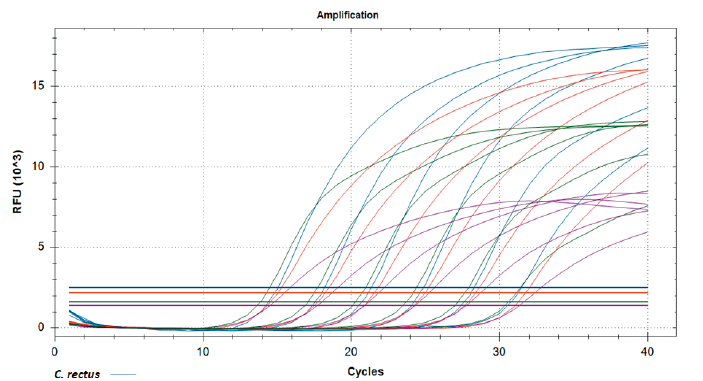Abstract
This study was conducted to analyze peri-implantitis bacteria and identify their associations with health status and health activities. Gingival sulcus fluid at the implant’s periodontal pockets sampled from the participants were analyzed by multiplex real time PCR. Participants had strains in the order of 100% F. nucleatum, 98.0% E. corrodens, and 96.0%
Figures & Tables

Fig. 1. Amplication of profiles for C.rectus -specific PCR products


